| |
|
Catalogue
Information thanks to Natalie Cadenhead, Curator of Antarctic and Canterbury Social History, Canterbury Museum.
Previous 1 2 3 4 5 6 7 8 Next
| Canterbury Museum ID |
Title |
Description |
Notes |
filename |
| 2007.160.51 |
Red P W brick |
Red brick with indented P W lettering within an indented rectangular frog with angled sides, circa 1886. |
Henry and William Wigram brought the Heathcote located George Stead Malthouse and Brickworks in 1886. |

2007_160_51.jpg |
| 2007.160.52 |
Brick, R S Frog |
Dark red brick with deep rectangular depression frog with sloped sides and indented letters R S made by Royse Stead and Co, Heathcote |
Royse, Stead & Co. (William Royse and George G. Stead) were brick and grain merchants with premises on Cashel Street, Christchurch circa 1880. Royce built Dorset House by Hagley Park in 1871 (now a backpackers). George Gatonby Stead (1841 1908) arrived at Lyttelton aboard the Talbot on 1 August 1866 with letters of introduction from Lord Lyttelton, former chairman of the Canterbury Association, and Henry Selfe Selfe, the association's London agent. Shortly after his arrival Stead joined the staff of the Union Bank of Australia in Christchurch. In 1870, as Canterbury was entering its boom years as New Zealand's major wheat-producing province, he joined William Royse in a grain-exporting business called Royse, Stead and Company. In 1875 they bought a malt works at Heathcote. They also established three large grain stores at Addington, in one of which was installed the best seed-cleaning plant in Australasia. When Royse retired Stead carried on the business himself. On 4 October 1876 Stead married Lucie Maria Wilkinson and bought Thomas Duncan's house, Strowan, on Papanui Road in 1890. With the help of Frederick Strouts's magnificent additions to the original homestead and some judicious landscaping, they developed Strowan Park (as they called it) into one of the finest properties in Christchurch. Poor harvests in 1882 and 1883 caused widespread failure in the grain industry. The New Zealand Grain Agency and Mercantile Company which Stead and Peter Cunningham had founded in 1881 became bankrupt three years later. The partners repaid the £72,000 owed to farmers and shareholders, although they had no legal obligation to do so. Stead, now running his grain business under the name George G. Stead and Company, fought his way back into the market and took on a new partner, Joseph Palmer, in 1897. For two decades Stead was the leading figure in Canterbury's business world. No one followed market trends with greater insight. In his good years he was reputed to be making £20,000 annually, and at his death his estate was valued at £188,000. Steads main hobby was horse-racing and he was active in the Canterbury Jockey Club, holding the office of honorary secretary for over 30 years before becoming chairman in 1900. He was active in the formation of the New Zealand Racing Conference and was among those responsible for introducing a totalisator at Riccarton in 1880, the first time this system of betting was used in New Zealand. Stead imported and bred horses and became the most successful owner of his time; with 181 wins, including a number of successes in Australia, he created a record not since matched by any individual owner. Stead also took an interest in rowing, golf, chess, rifle shooting and the hunt. He was one of Christchurch's first motor car enthusiasts. An ardent imperialist and patriot, he was responsible for equipping and providing 110 mounted men for the South African war (1899--1902), Canterbury being the first province to provide a troop for this purpose. Stead's was appointed director of a number of prominent companies including Canterbury College, Lincoln School of Agriculture, the Christchurch Tramway Board, the Union Fire and Marine Insurance Company, the Canterbury Club, the Christchurch's Theatre Royal and president of the Canterbury Chamber of Commerce In 1890 Stead purchased the Press , then in a seriously run-down state and put the newspaper back on its feet with a combination of new plant and a progressive management and journalistic policy. When Stead retired from business in 1903 he devoted almost as much time to the Press as to his racing stud. He not only saved the paper from bankruptcy but more than tripled its earning capacity. |

2007_160_52.jpg |
| 2007.160.53 |
Brick, Smith & Stead |
Red/brown brick with indented letter S in indented rectangular frog with rounded corners. The S is lengthwise on the brick |
|
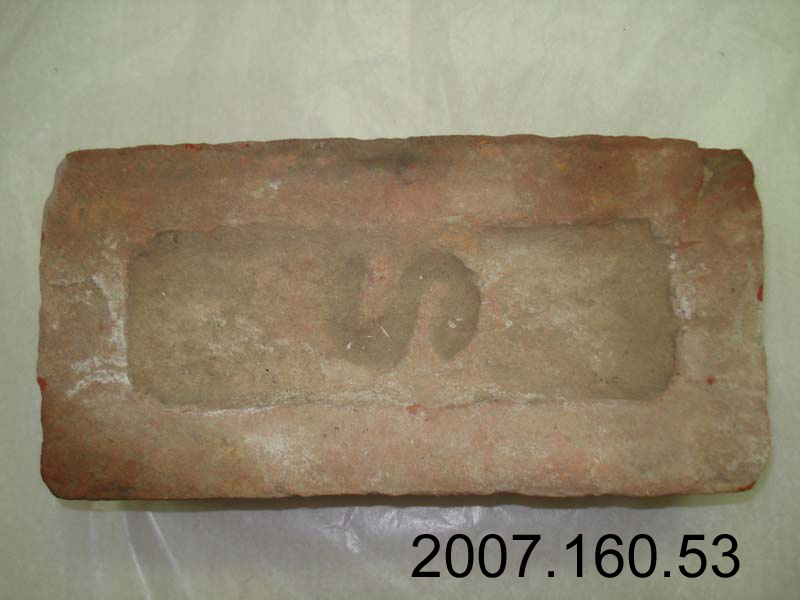
2007_160_53.jpg |
| 2007.160.54 |
Brick, T H Frog |
Orange/red brick with shallow rectangular frog with indented soft lettering; T H |
Hills was a brick maker, originally for Ipswich who settled in Rangiora and in the 1850s set up one of the largest and most successful local brickworks. He took fours years off work to go on an unsuccessful gold digging venture in Central Otago before returning to his brickworks which he expanded in 1862 and 1877 with new kilns using the latest in technology of time allowing him to make over 15,000 bricks per burn. |
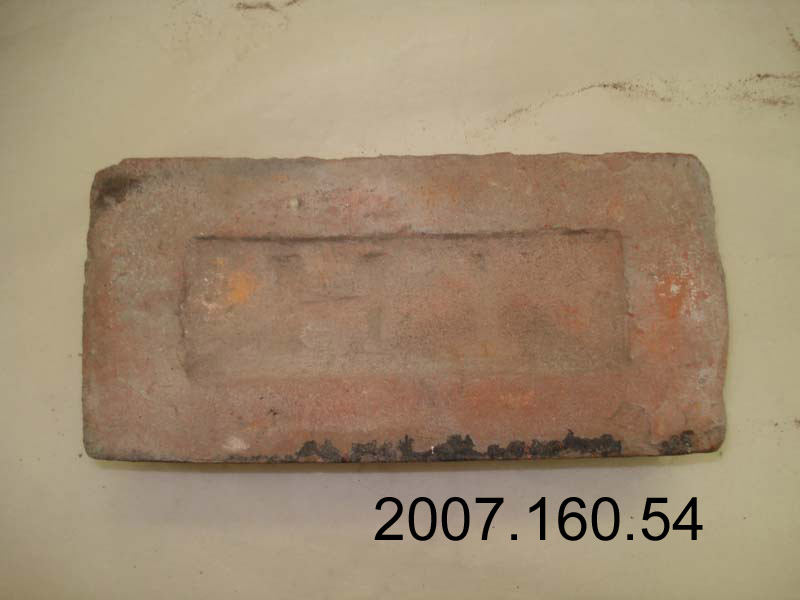
2007_160_54.jpg |
| 2007.160.55 |
Brick, Todd Frog |
Apricot rough firebrick with shallow rectangular depression and indented text; Todd. Made by Thomas Todd and Son |
Made by Thomas Todd and Sons, Waikari, Otago/Southland. |
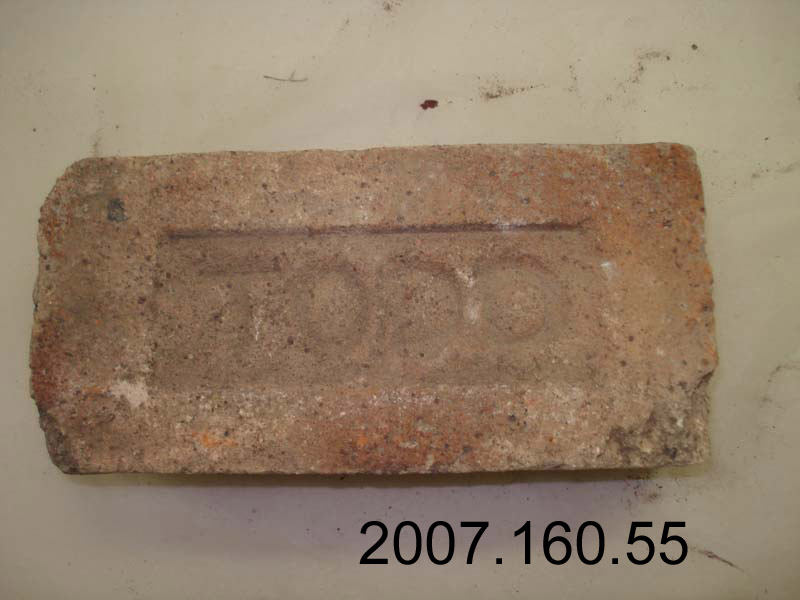
2007_160_55.jpg |
| 2007.160.56 |
Brick, T N H |
Red brick with raised letters T N H in an indented rectangular frog with angled sides |
|
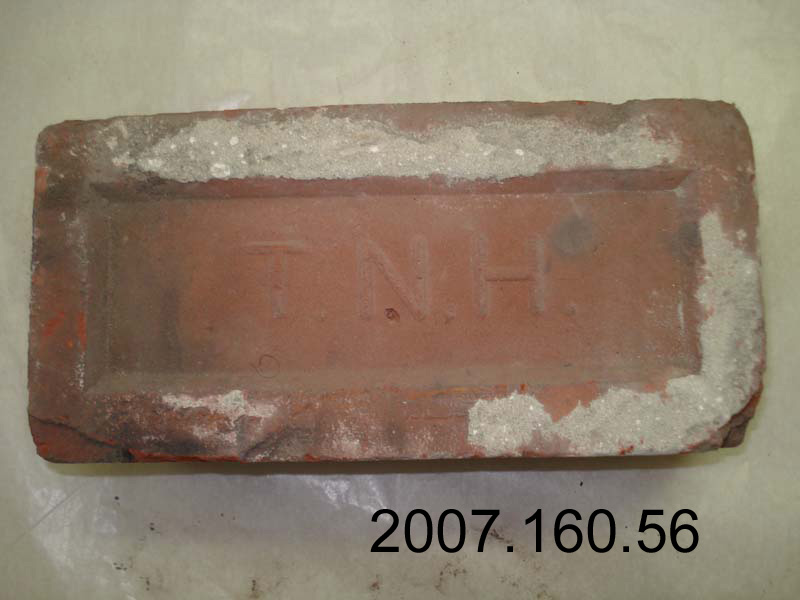
2007_160_56.jpg |
| 2007.160.57 |
Thorberg D fire bricks |
Pale apricot firebrick with Thorberg D frog in indented letters. |
Made in Hurunui area, North Canterbury. Probably a very small factory. |

2007_160_57.jpg |
| 2007.160.58 |
Brick, W Frog |
Dark red straight sided brick with deep indented frog with indented letter W with indented dots on each side. Made by Wigram Brothers. |
Made by Wigram Bros, a firm established by HF later Sir Henry Wigram in 1886. These Woolston based brickworks could produce 100,000 bricks per month, and 170,000 were produced at their Heathcote works where they also ran malthouses. |
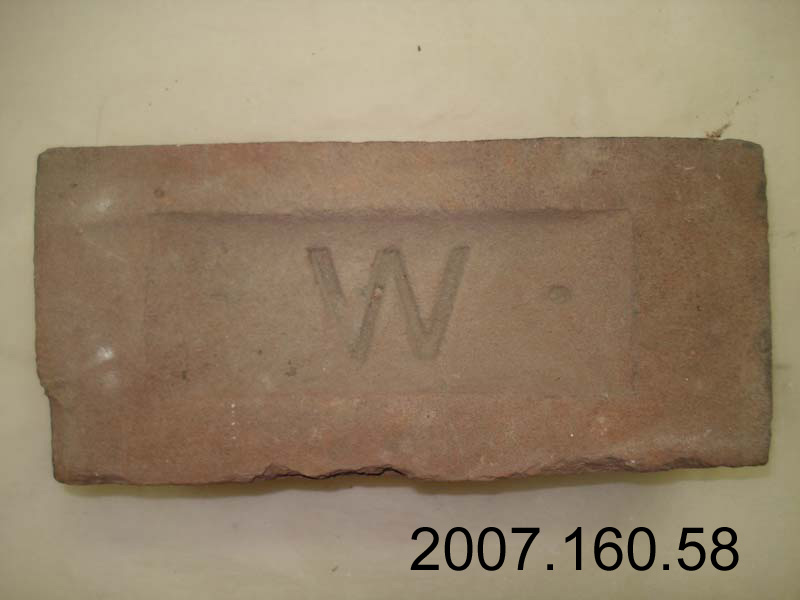
2007_160_58.jpg |
| 2007.160.59 |
Brick, plain rectangular frog |
Red brick with rectangular depression frog with sides angled down to central line making triangles at each end. |
Frog design along with specific colours of the bricks were used to identify makers and areas in the early years (1840 - 1870) of New Zealand brick making. |
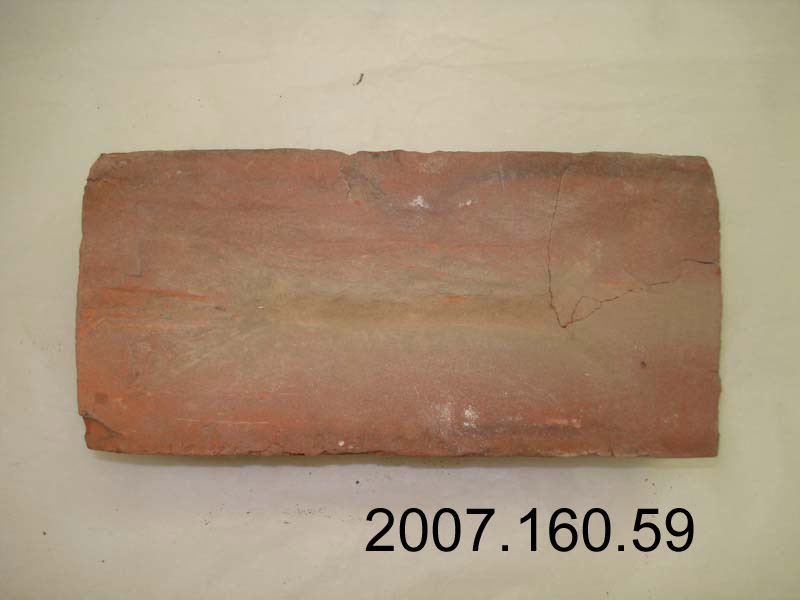
2007_160_59.jpg |
| 2007.160.60 |
Brick, W H Frog |
Red brick with rectangular depression frog with rounded corners and indented letters W H. Made by William Hill. |
|
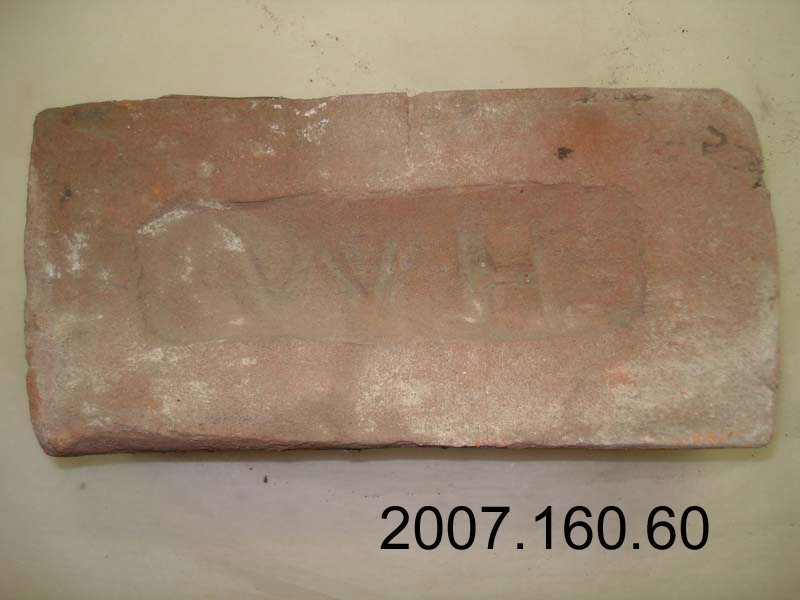
2007_160_60.jpg |
|
|
|

